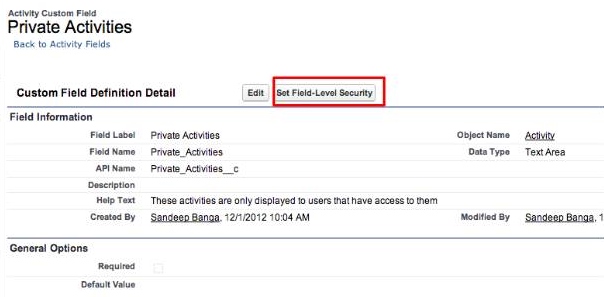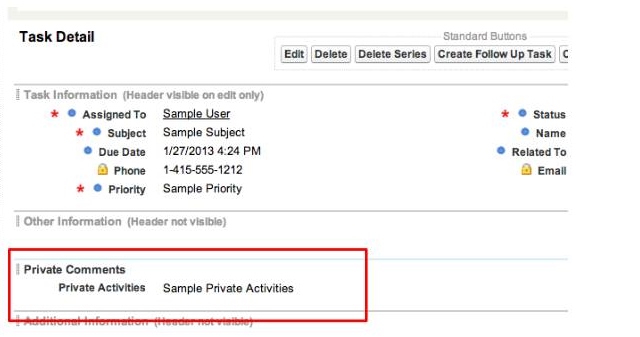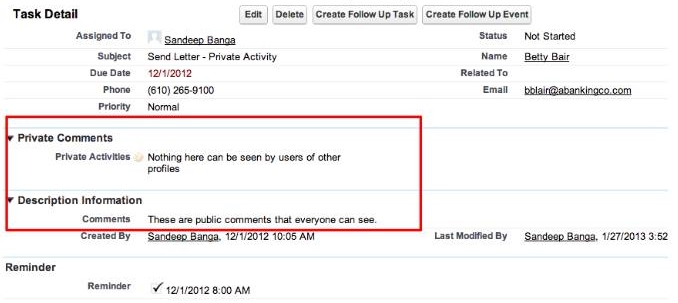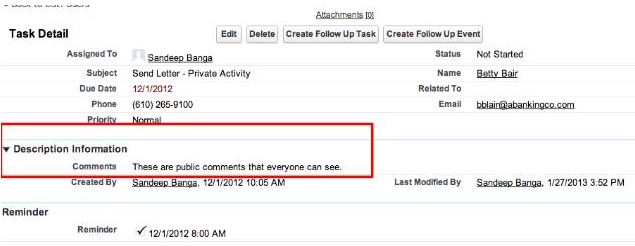Private Activities in Salesforce: Have you ever needed to make Activities Private while sharing the parent record?
I recently worked on a project where the Client needed to track private activities without making the contacts Private. Executive Director and Senior Managers worked with high-net worth individuals and needed to track activities that were confidential in nature. Other users also worked with these Contacts, so we didn’t want to make them Private. If you have been in this situation you would know that salesforce provides a Private sharing setting (Organization-Wide Default) for Activity but it does not work if the Activity is related to a Public record. Here is the idea on AppExchange that illustrates the issue further: http://success.salesforce.com/ideaview?id=08730000000BrSoAAK
Another scenario that I have run into as a Nonprofit salesforce consultant –
You have Interns work with Contacts to host events and need to track their Activities; your Development team also tracks Tasks which they do not want interns to see.
In a nutshell, the Organization Wide Default (OWD) setting loses its meaning as soon as you relate the Task to a Contact or Account that is shared. Now you are left with the option to create these Accounts and Contacts as Private; meaning only the user creating them and users above in Role Hierarchy would see them. If other users need to work with the same Contact they would need to create a duplicate Contact…not ideal!!
This is what you can do –
- Create a new profile for Senior Managers who would track confidential Activities and added those users to the profile.
- Create a new custom field (Text Area) on Activities for storing Private Comments.
- Now click on the Field-Level Security button and assign the field to the desired profile (Senior Manager).
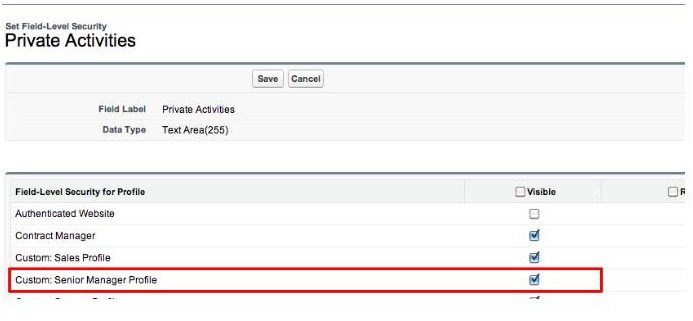
- Add the Private Comments field to the Task Page Layout.
- Senior Managers will now see two comment fields on the Task layout. They can use the Private Comments field to track confidential comments that may only be seen by other users in the same Profile and the Comments field for public comments.
- This is what other users will see for the same Task.
That’s it! Just so you know, other users can still see the Subject, and I found that to be good so they can see that an Activity was created by someone. If you really wanted, you could create a “private” Subject as well. Also, Field-Level Security does not prevent other users from searching on the Private Comments field. If needed, you can have Salesforce.com turn that on for you.
Here are a couple of other approaches that were considered –
- Using a Custom Object for Private Activities
- This may give you more control using OWD settings, however users will need to go to separate objects (relate lists) to create, update and view Activities.
- You will not be able to leverage Task Reminders
- Creating a Notes field right on the contact record and sharing that using Field-Level Security
- This is even simpler, however it is not as robust as an Activity. For example you don’t have a due date and reminders.
Sandeep Banga is the CEO of Acutedge. He started his career as an Architect, loves motorcycles, Pink Floyd and using technology to solve problems for his clients.

